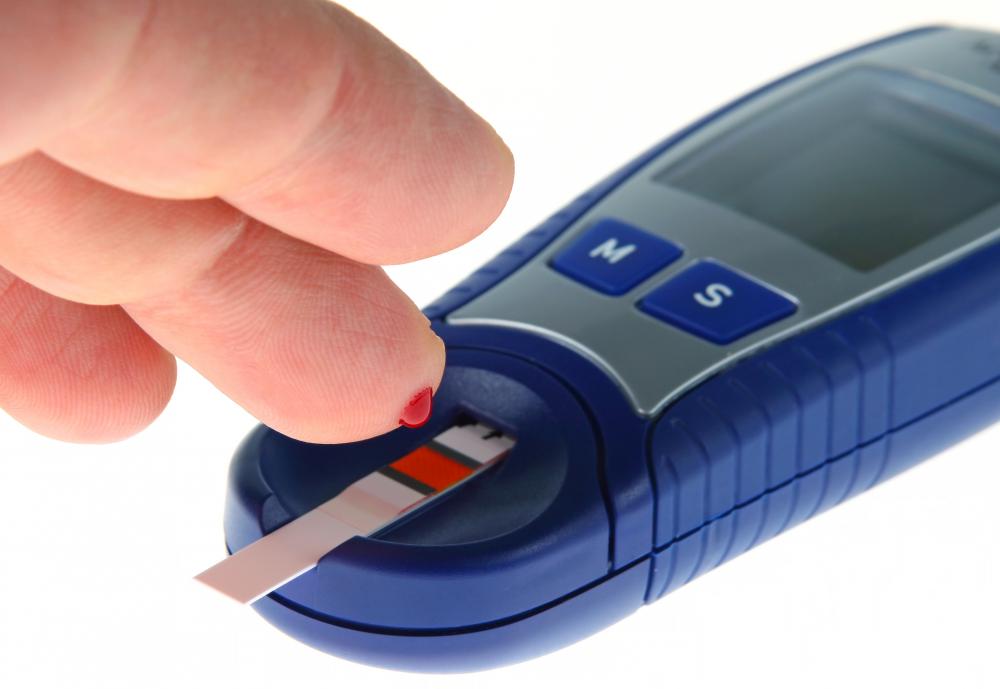At WiseGEEK, we're committed to delivering accurate, trustworthy information. Our expert-authored content is rigorously fact-checked and sourced from credible authorities. Discover how we uphold the highest standards in providing you with reliable knowledge.
What are the Different Types of Blood Glucose Meters?
The different types of blood glucose meters include portable and continuous monitoring. Blood glucose meters are used to determine how much glucose is in a person's blood. People suffering from diabetes or hypoglycemia must monitor their glucose levels to ensure they have an appropriate amount in their blood.
Diabetes is a disease that causes the body to produce an insufficient amount of insulin or causes the body to be insulin-resistant. If there is not enough insulin in the bloodstream, the blood glucose levels get too high, which may lead to increased thirst, frequent urination, and increased hunger. Hypoglycemia is a condition that causes an insufficient amount of blood glucose in the brain. Symptoms typically include feeling fatigued but may also lead to seizures, unconsciousness and brain damage in severe cases.

Portable blood glucose meters are the most common type. The meter is a small, battery operated device used in conjunction with test strips to periodically check glucose levels. The person is required to prick his or her finger using a disposable lancet and place a drop of blood into the pad on the end of the test strip. The test strip is inserted into the portable glucose meter and the glucose level is displayed. Most people suffering from diabetes test their glucose levels before eating a meal and again approximately two hours after eating to determine if their blood sugar levels are too high.

Continuous monitoring blood glucose meters are often used by diabetics who have extreme cases of the disease. By using one of the continuous monitoring meters, the person knows at all times what his or her blood glucose levels are. This helps prevent any sudden spikes or drops in the glucose levels and also alerts patients when medication needs to be administered.

The continuous monitoring blood glucose meters work by using a sensor placed under the skin. The sensor takes a reading of the percentage of blood glucose in the tissues and sends the information to an electronic receiver typically worn on the belt like a pager. The information is also transmitted via radio receiver and uploaded for data storage. This is especially helpful to doctors when trying to monitor blood glucose levels in patients who have significant swings in their levels.

The sensors in continuous monitoring blood glucose meters have to be replaced every few days, which makes this type of blood glucose meter more expensive than the portable meters most people use. The information provided, however, does make the continuous monitoring blood glucose meters the preferred option for admitted hospital patients and diabetics having trouble controlling their sugar levels even with insulin shots. This is because the levels can be gathered every few minutes without requiring a finger prick or blood draw.
AS FEATURED ON:
AS FEATURED ON:















Discuss this Article
Post your comments